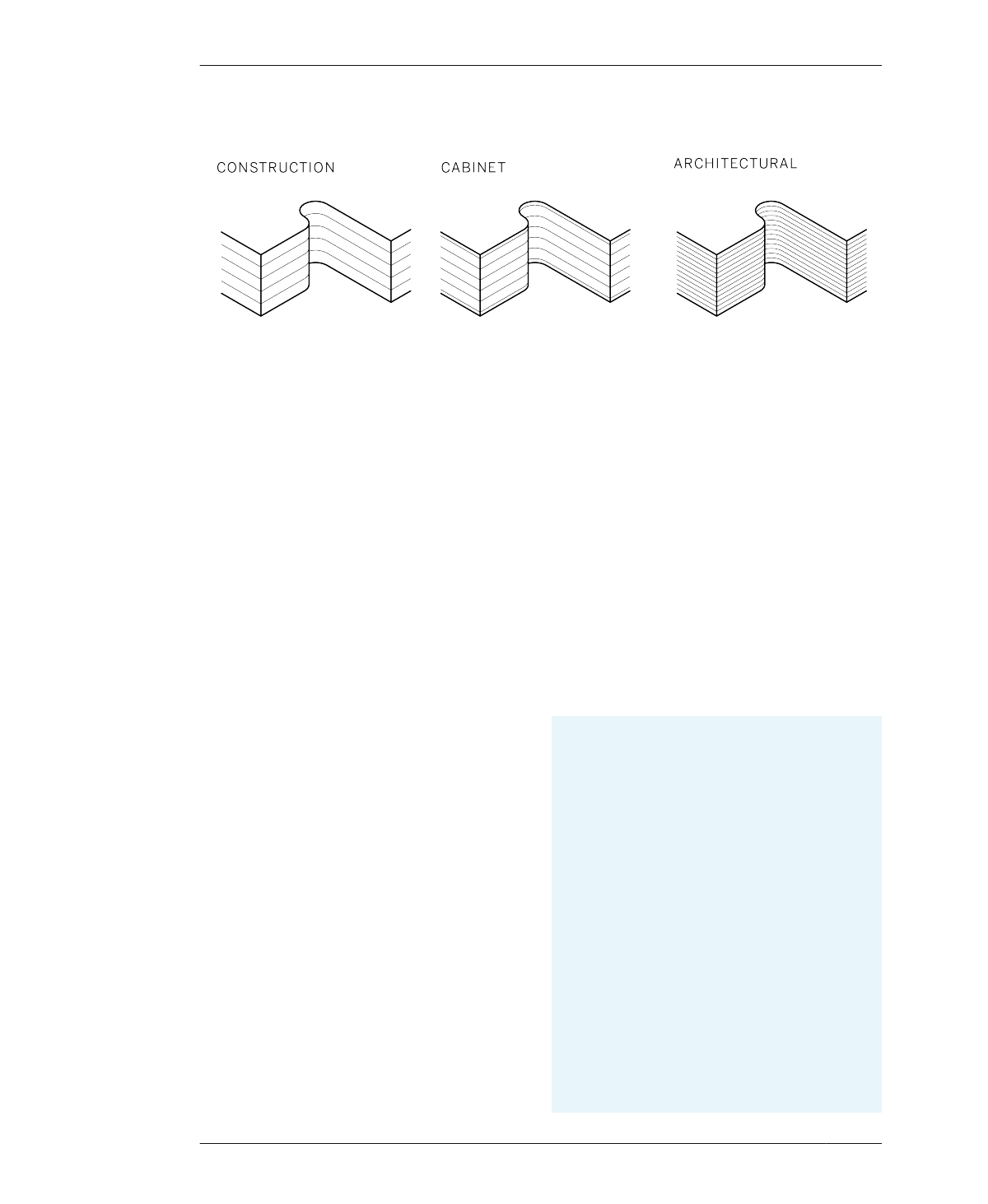
PLYWOOD
FIGURE 5-1
Cross section of three
plywood types
Parts cut from an especially heavy material
may sag under their own weight. Similarly,
parts cut from a weak material may buckle
under if carrying heavy loads. Furniture parts
cut from plywood, however, won’t usually have
this problem.
A sheet’s faces are the large exposed top and
bottom layers, while the thin edge surfaces
show the cross-section of plies, appearing “stri-
ped.” CNC profile cutting exposes these striped
edges, providing an opportunity for furniture
designs to express them in joinery details.
sheet materials that do not lie flat on the CNC
bed will result in imprecisely cut parts.
Construction Grade
Also referred to as softwood plywood, these
sheets consist of 3–7 plies made from conifers
like pine, cedar, or spruce, and are used as resi-
dential sheathing or flooring underlayers. It’s
the cheapest plywood type, typically not very
attractive, and often contains defects. If you’re
on a budget, seek out products that have san-
SELECTING MATERIALS
Your choice of plywood type can radically trans-
form a design. A table made from raw sheath-
ing, for instance, looks very different from the
same design cut from refined, prefinished
veneer plywood.
Plywood is marketed and priced to feature the
face veneer, but to ensure clean CNC joints, the
core is equally important. Checks, voids, and
gaps on the interior plies will yield unsightly and
possibly compromised joints, so it’s best to
avoid lower graded plywoods that usually have
these flaws. Avoid plywood or other material
that has excessive camber or warping, since
FACE VENEER GRADES
Manufacturers typically produce plywoods with a
front and back, which makes sense for cabinetry
and finish paneling. As a result, you’ll find that most
plywood has one side with a higher grade of veneer,
and another side with a lesser quality veneer.
Face veneers are assigned a letter grade: A is the
best quality and D is the worst. These faces are indi-
cated by letter pairings like A/B (desirable) or C/D
(terrible). When working with plywood sheets that
have different quality faces, you’ll need to pay extra
attention when placing the material onto the
machine bed to ensure that the best quality face
ultimately ends up on the most visible, prominent
side of your furniture. See “Cut Pockets on the Cor-
rect Side” on page 288 for tips.
128
DESIGN FOR CNC
